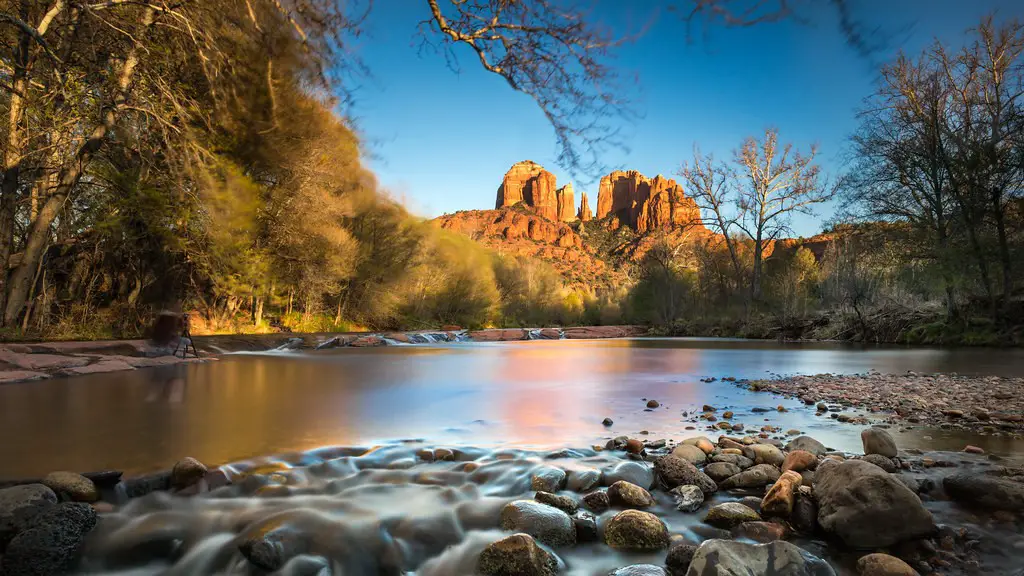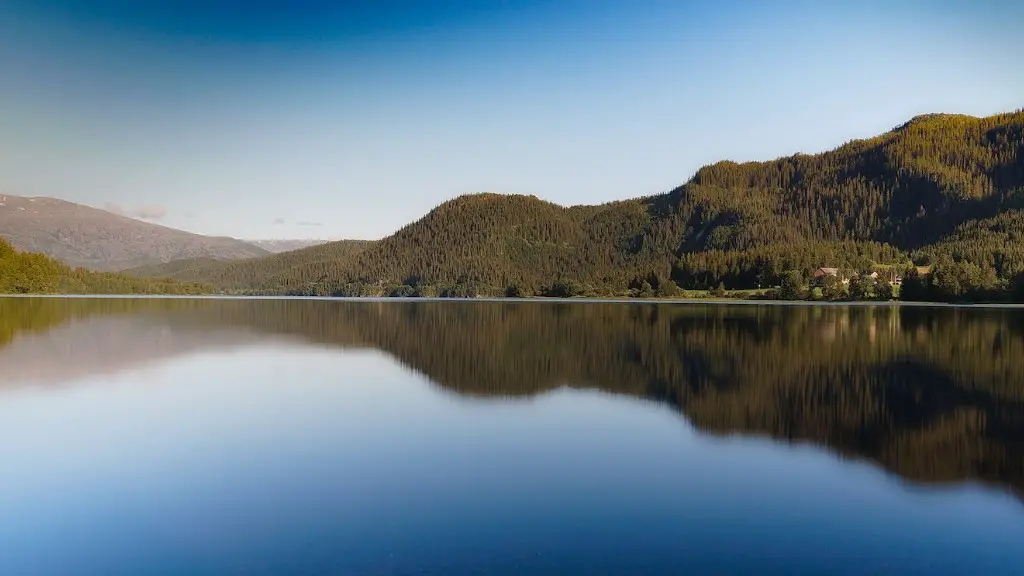Where Does The Mississippi River Flow?
The Mississippi River is one of the world’s most powerful rivers. It originates in Minnesota, in Lake Itasca, and flows southward through 10 US states before entering the Gulf of Mexico at Louisiana’s southernmost point. It is the fourth longest river in the world and is an integral part of the ecosystem and economy of the United States.
This mighty river acts as a water highway, making travel and transportation significantly more efficient. Additionally, its presence creates a large amount of diversity in wildlife habitat. It is essential to the cultural history of US states and is relied upon as a source of agriculture, recreation, and power in many towns. The Mississippi River provides water to 40 percent of the United States’ population and is an essential part of the US’s large economic power.
10 States of the US Mississippi River Flow Through
The Mississippi River flows through various US states, beginning in Minnesota and ending in Louisiana. It is made up of two different branches, Minnesota, and Missouri. The following states, listed from top to bottom, all have part of their boundary along the banks of the Mississippi:
- Minnesota
- Wisconsin
- Iowa
- Illinois
- Kentucky
- Missouri
- Arkansas
- Tennessee
- Mississippi
- Louisiana
The river’s basin is divided into two sections – the Upper Mississippi River, which runs from the source to Cairo, Illinois, and the Lower Mississippi River, which flows from Cairo to the Gulf of Mexico. The Upper Mississippi River is the longest continuous stretch of the river, at approximately 981 miles, followed by the Lower Mississippi River, at about 864 miles.
Economic Impact Of The Mississippi River
The Mississippi River is a vital asset to the US economy and to international trade. It provides efficient, cost-effective transportation of cargo, which helps to generate and sustain millions of jobs nationwide. There are over 300 ports and terminals on the Mississippi River that facilitate international trade and transport annually.
The river also serves as an important source of power. Over 200 power plants, located in more than 10 US states and territories, use the river’s energy to generate electricity. Furthermore, the Mississippi River basin also provides a vast network of waterways that act as breeding and grazing grounds for diverse species of fish and aquatic life.
Environmental Impact Of The Mississippi River
Although the Mississippi River is a source of great economic and social benefits, it also creates many environmental problems due to the high amounts of pollution it carries from upstream states. Pesticides, chemical fertilizers, and other industrial waste are all major sources of pollution for the river. As a result, the river often experiences dramatic changes in water quality, affecting the health of the aquatic life it supports.
In addition, the high levels of sediment from upstream states have caused issues in the Gulf of Mexico. Most of the sediment from the river is deposited into the Gulf, causing it to become shallower and more filled with pollutants overtime. This can lead to the death of coral reefs, increases in sea level rise, and further issues with water quality.
Study & Conservation Of The Mississippi River
The US Department of Agriculture (USDA) and several universities are conducting research on the Mississippi River to understand the impacts of water pollution, erosion, and other changes to the river’s water quality. In addition, the USDA has taken steps to reduce the number of fish caught in the river, improve water quality, and protect threatened fish species. The US Geological Survey (USGS) is also monitoring the water levels of the Mississippi River and issuing public alerts to ensure public safety.
In addition, the US Fish and Wildlife Service has established a wildlife refuge on the banks of the Mississippi River. The refuge is part of the Upper Mississippi River National Wildlife and Fish Refuge and exists to provide protection to over 400 species of birds, mammals, fish, amphibians, and reptiles.
Mississippi River Tourism & Recreation
The Mississippi River is a popular destination for tourists, as it offers a unique opportunity for sightseeing, boating, fishing, and other recreational activities. There are several national parks and conservation areas located along the banks of the river which provide opportunities for nature tours, birdwatching, and camping. In addition, the river is a great resource for fishing, with over 60 species of game fish found in the river. For those looking for an adrenaline rush, the river offers white-water rafting, kayaking and canoeing.
The Mississippi River also provides access to a wealth of cultural and historical sites, as many towns and cities along the river showcase their local heritage, through museums and monuments. The mighty river itself has a rich history, with many stories to be told.
Mississippi River Bridges & Transport
The Mississippi River is highly important to the country’s transport system, with thousands of trucks and trains crossing it every day. There are over 57 bridges built across the Mississippi River, with the longest being the 4.5-mile-long John F. Kennedy Memorial Bridge in New Orleans. The river also has six locks that help ships navigate their way along the river.
In conclusion, it is clear to see that the Mississippi River is an integral part of both the cultural and economic history of the United States. Its presence provides a unique opportunity for travel, transportation, recreation, and conservation. The river will continue to be an important part of the Midwest for many years to come.
Mississippi River Cruise
For those looking for a unique way to enjoy the Mississippi River, the option of cruises has become increasingly attractive. Cruises can provide a perfect way to experience the majestic beauty of the river, with comfortable hotel-style rooms and gourmet meals included. Cruises also allow visitors to access some of the natural sites, such as the Delta wetlands, in a comfortable and relaxed environment. Cruises may also be conducted with a specific aim, such as bird watching, fishing, or photography.
The Mississippi River serves as a vibrant highway for many types of vessels and is a popular choice for ferries and tour boats. Many river cruises provide passengers with a unique chance to experience the blending of several different cultures, as it travels through 10 US states, making stops at several ports along the way. From historic sites to desert beaches, cruises offer an immersive way to experience the Mississippi’s history, culture, and beauty.
Mississippi River Culture & Local Activities
Each US state the Mississippi River flows through has its own unique cultural flair. In Illinois, visitors can enjoy some of the nation’s greatest museums, including the Art Institute of Chicago and the Shedd Aquarium. Wisconsin has a wealth of outdoor activities and is famous for its cheese production. Arkansas is home to some of the best barbecue in the country and offers a fun-filled experience with plenty of music and lively nightlife.
In Mississippi, the birthplace of Elvis Presley, visitors can explore the musical roots of the state and take in some of the many festivals and events that take place throughout the year. Louisiana is the final stop for the Mississippi, the de facto capital of Cajun culture, where visitors can enjoy unique cuisine, attractions, music, and a vibrant nightlife scene.
Mississippi River Fauna & Flora
The Mississippi River provides a home to many species of animals and plants. The freshwater ecosystem of the river serves as a crucial habitat to a variety of species, including various fish and amphibians, reptiles, and birds. In addition, the bottom of the river consists of silt, sand, gravel, and other sediments, creating an ideal environment for both aquatic and terrestrial plants.
The evolution and diversity of the ecosystem in the Mississippi River allows for a wide range of species to flourish. Some of the most notable species that inhabit the river are the American White Pelican, the American Alligator, and the Loggerhead Sea Turtle. These three species all serve important roles in the ecological balance of the Mississippi, with the Loggerhead Sea Turtle maintaining clean water quality by feeding on aquatic snails and other invertebrates.
Mississippi River Dangers & Challenges
The Mississippi River is not allergic to danger and challenges. Floodplains, created by high river stages, can cause extensive damage to both land and people in regions through which the Mississippi flows. In addition, the river is known to turn into a raging torrent and can be extremely dangerous if not navigated properly. Furthermore, strong river currents can also be hazardous and can cause boats and other watercrafts to capsize.
The river is also subject to pollutions from upstream states which can contaminate the waters and harm aquatic life. The US Army Corps of Engineers has made efforts to minimize river flooding caused by rainfall, constructing dams and levees to help manage water levels. In addition, they have implemented various safety measures, such as dredging and implementing navigation regulations.



